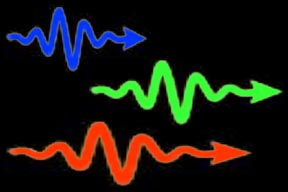Because of their dual nature as particles and waves, photons are often shown as squiggly lines.
Click on image for full size
Windows to the Universe original artwork by Randy Russell.
Photon
Light is very strange. Sometimes it is best to think of light as a series
of waves. At other times, it is useful to think of light as a swarm of particles.
When we think of light as particles, we call those particles of light "photons".
Photons are the carriers of all forms of electromagnetic
(EM) radiation, not just light. The different types of EM radiation correspond
to different amounts of energy per photon. Gamma
ray and X-ray photons have
the most energy, radio
frequency photons have the least energy, while ultraviolet,
infrared, and visible
light photons have intermediate energies.
Photons travel at the speed of light, which is 299,792.458 kilometers per
second (about
186,282.4 miles per second)! Photons don't have any mass, nor do they carry an electrical charge.
You might also be interested in:

Electromagnetic radiation is the result of oscillating electric and magnetic fields. The wave of energy generated by such vibrations moves through space at the speed of light. And well it should... for
...more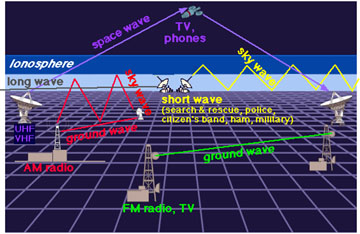
Radio waves are a type of electromagnetic radiation. A radio wave has a much longer wavelength than does visible light. We use radio waves extensively for communications. Radio waves have wavelengths as
...more
The thermosphere is a layer of Earth's atmosphere. The thermosphere is directly above the mesosphere and below the exosphere. It extends from about 90 km (56 miles) to between 500 and 1,000 km (311 to
...more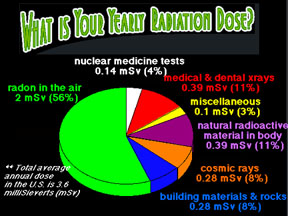
Radiation comes in two basic types: electromagnetic radiation transmitted by photons, and particle radiation consisting of electrons, protons, alpha particles, and so forth. Electromagnetic radiation,
...more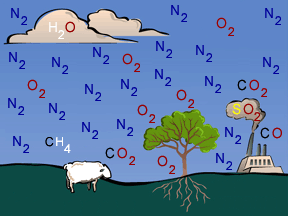
When you think of chemistry, do you think about mixing colored liquids in test tubes and maybe making an explosion... or at least a nice puff of smoke? Did you know that a lot of chemistry happens in Earth's
...more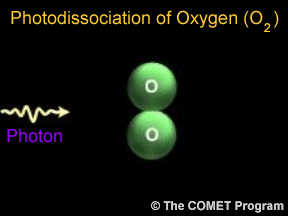
Photons are tiny bits of light and other kinds of electromagnetic radiation. Photons can sometimes break apart molecules. When this happens, it is called photodissociation. When a photon runs into a molecule,
...more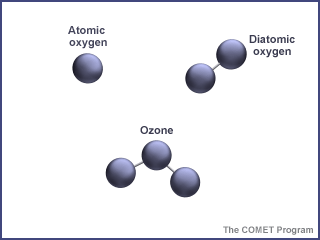
Ozone is a special kind of oxygen molecule. Normal oxygen molecules (O2), the kind we need to breathe, have two oxygen atoms. Ozone molecules (O3) have three oxygen atoms. Ozone forms when a photon of
...more


